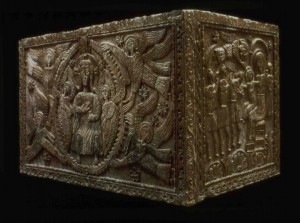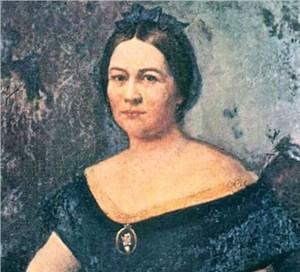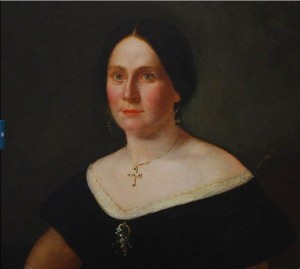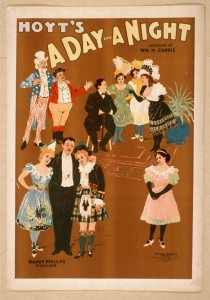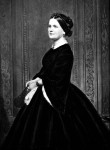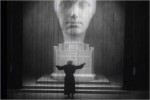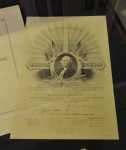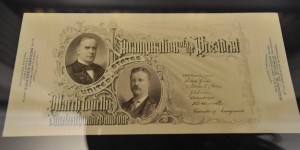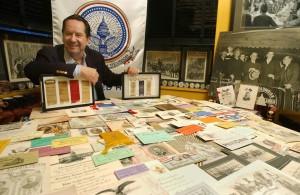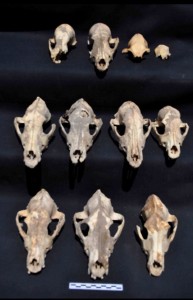 Archaeologists with the North Abydos Votive Zone Project have had a remarkably fruitful digging season. They found 83 animal mummies, most of them dogs, packed tightly in a single chamber of a monumental structure that bears inscriptions referring to Pharaoh Seti I (reigned ca. 1290 B.C. – 1279 B.C.). The mummies are of more recent extraction, dating to around 2,000 years ago. Most of them have lost their linen wrapping. Experts believe the dogs, cats, sheep and goats were sacrificed and interred in a nearby tomb that has yet to be discovered, and removed haphazardly when robbers broke into that tomb later in antiquity.
Archaeologists with the North Abydos Votive Zone Project have had a remarkably fruitful digging season. They found 83 animal mummies, most of them dogs, packed tightly in a single chamber of a monumental structure that bears inscriptions referring to Pharaoh Seti I (reigned ca. 1290 B.C. – 1279 B.C.). The mummies are of more recent extraction, dating to around 2,000 years ago. Most of them have lost their linen wrapping. Experts believe the dogs, cats, sheep and goats were sacrificed and interred in a nearby tomb that has yet to be discovered, and removed haphazardly when robbers broke into that tomb later in antiquity.
 Abydos was an important holy site going back to the earliest kings of Egypt. According to Egyptian religion, Osiris was buried at Abydos after his brother Set killed him. A temple to Osiris was built on the site and yearly processions in his honor carried a statue of Osiris from the temple to his tomb where rituals were performed overnight. The next day another procession would bring the effigy back to the temple.
Abydos was an important holy site going back to the earliest kings of Egypt. According to Egyptian religion, Osiris was buried at Abydos after his brother Set killed him. A temple to Osiris was built on the site and yearly processions in his honor carried a statue of Osiris from the temple to his tomb where rituals were performed overnight. The next day another procession would bring the effigy back to the temple.
Over the centuries, additional chapels were built along the procession route. One of the important discoveries made by the archaeological team this past summer was an early chapel (about 3,600 years old) built very close to the processional route. This discovery disproves a theory some historians have proffered that the chapels along the processional route got increasingly closer until they began to encroach on the road itself. This chapel is both old and close.
 Another significant find is a wooden statue of a pharaoh discovered in a chamber next to the animal mummies. Wooden statues of Egyptian royalty are rare. This one was discovered covered in mud and termite droppings and only identified as a pharaoh once the conservator restored it. Which pharaoh is still unanswered, but there is one particularly intriguing possibility.
Another significant find is a wooden statue of a pharaoh discovered in a chamber next to the animal mummies. Wooden statues of Egyptian royalty are rare. This one was discovered covered in mud and termite droppings and only identified as a pharaoh once the conservator restored it. Which pharaoh is still unanswered, but there is one particularly intriguing possibility.
The statue’s proportions matched up with those of statues dating from the 18th dynasty of Egypt’s history, from about 3,550 to 3,300 years ago. That is, with one big exception — the waist is significantly thinner.
This brought up an intriguing question — could this statue be a representation of Hatshepsut, a female pharaoh who ruled Egypt about 3,500 years ago? No wooden statues of her are known to exist, so [excavation director Mary-Ann] Pouls Wegner examined large stone statues of her.
“Even though she was portrayed as a man in her [statues], oftentimes they did give a nod to her female physique by making her waist narrower,” she said. In addition the contours of her cheeks and chin are sometimes depicted as being a little more delicate. Could it be her? “I think it’s possible,” Pouls Wegner said.
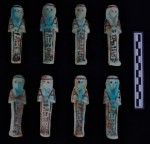 In that same monumental building — which has walls six feet wide, typical of storage buildings, only the layout of this structure is closer to that of a temple — archaeologists found the richly appointed tomb of a priest. The tomb contains two groups of shabtis, figurines of servants who would work for the deceased in the afterlife. One group is made of Egyptian faience, a non-clay ceramic with a vitrified glaze in shades of blue and green. There are 58 faience workers and six faience overseers.
In that same monumental building — which has walls six feet wide, typical of storage buildings, only the layout of this structure is closer to that of a temple — archaeologists found the richly appointed tomb of a priest. The tomb contains two groups of shabtis, figurines of servants who would work for the deceased in the afterlife. One group is made of Egyptian faience, a non-clay ceramic with a vitrified glaze in shades of blue and green. There are 58 faience workers and six faience overseers.
The second group is less elegant, perhaps, but contains rare social historical clues to ancient Egyptian life.
These figures held clear fingerprints of children, suggesting children in Egypt crafted together shabtis to do the work of the deceased in the afterlife. “One could do fingerprint analysis with them, they’re very crisp and very clear,” Pouls Wegner said.
